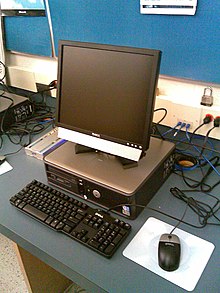Your Health and Comfort With Desktop PCs
 The desktop PCs are by far the smartest way to work at the computer, especially if you work or play at it all day. They are situated at the right height and so is your keyboard. Your posture becomes better, you are more at ease, and if you are typing correctly you will never be in danger of carpel tunnel syndrome.
The desktop PCs are by far the smartest way to work at the computer, especially if you work or play at it all day. They are situated at the right height and so is your keyboard. Your posture becomes better, you are more at ease, and if you are typing correctly you will never be in danger of carpel tunnel syndrome.
Of course, as far as convenience, the lap top beats all. It is portable, has a built in mouse, which is better for you than the mouse on the pad, and you can use it just about any place that it is not too sunny.
But nothing beats the desktop when it comes to typing. Your head looks onto a screen at your head height, your arms hang naturally to type on the keyboard that is placed on a separate retractable part of your desk, so that the height of it is also appropriate, and it is actually comfortable to keep this position if you type or work at your computer all day long. While working at a lap top, you will soon find yourself trying to stretch your neck and arms, and it is never as comfortable as print ads and commercials would like you to believe.
The first typewriter in about 1874 introduced a set of keys that would be more natural for the fingers to find. The keys were also in a graduated elevation form and the letters were arranged so that they would not be snagged together while the person types in the English language. The keyboard on a lap top is very flat, although our fingers are different lengths. The lap top may be convenient for many things, but it certainly was not designed for long periods of typing.
One can attach a keyboard to the lap top, in order to make the screen and keyboard height more natural and comfortable for the one working on the computer, especially if that person types a lot during the day.
So the bottom line is, for convenience and portability a lap top is great. But for heavy workloads, the desktop pcs are more comfortable and healthier for your neck and back.